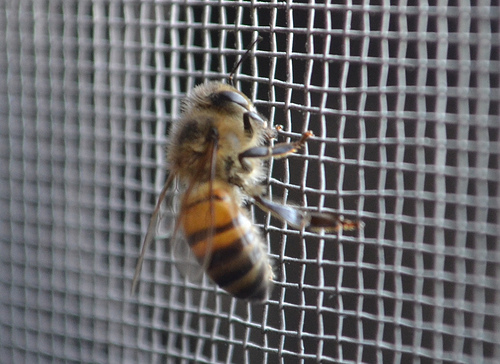As we’ve noted several times already, the Navy is at the forefront of developing greener ways to do its thing. (“Its thing” is mostly “bombing stuff.”) Its recent push into biofuels research caused some waves among fossil fuel-friendly members of Congress over the summer.

U.S. NavyA fighter takes flight over a giant pool of fuel-to-be.
And now, the Navy is working to figure out how to power its planes with seawater. This is not a joke. Oh — and nor is it green.
The US Navy has a problem. Its ships often stay at sea for months on end far away from home. To keep its fleet of ships, boats and aircraft running, a fleet of 15 oil tankers roams the globe acting like floating gas stations. According to the Naval Research Laboratory (NRL) nearly 600 million gallons (2,700 million litres) of fuel were delivered to Navy vessels in 2011. …
One of the most interesting lines it is pursuing is a plan to generate jet fuel from a source that is abundance wherever the fleet is: seawater.
Jet fuel, along with all other common fuels, is a hydrocarbon. As the name suggests, these are chains of hydrogen and carbon atoms. In theory if you can combine those two elements in the correct way you can produce a fuel. It turns out that seawater is a good source of both ingredients – it contains hydrogen in the H20, and a lot of dissolved carbon dioxide (CO2). It also has the advantage of occurring in abundance – and for the Navy – close to the action.
Before you start imagining a plane dipping a little nozzle into the sea as it flies over, it’s not that easy — if it’s possible at all. (Unlike, say, water-spout jetpacks.)
There is a catch. According to the first law of thermodynamics, nothing comes for free. To get useful energy out, you need to put useful energy in to the system. It is like combustion in reverse. Energy is needed to break the water and the carbon dioxide down into constituent parts and then more energy – and time – is needed to form the hydrocarbon.
“We do have to have a power source to supply the electricity for the electrochemical process,” admits [the NRL’s Dr Heather Willauer]. That could come from solar or – more likely – the nuclear reactors already onboard many ships.
In short: use nuclear power to turn seawater into jet fuel that emits carbon dioxide when burned. So, um, maybe we should just keep working on that biofuels idea.



